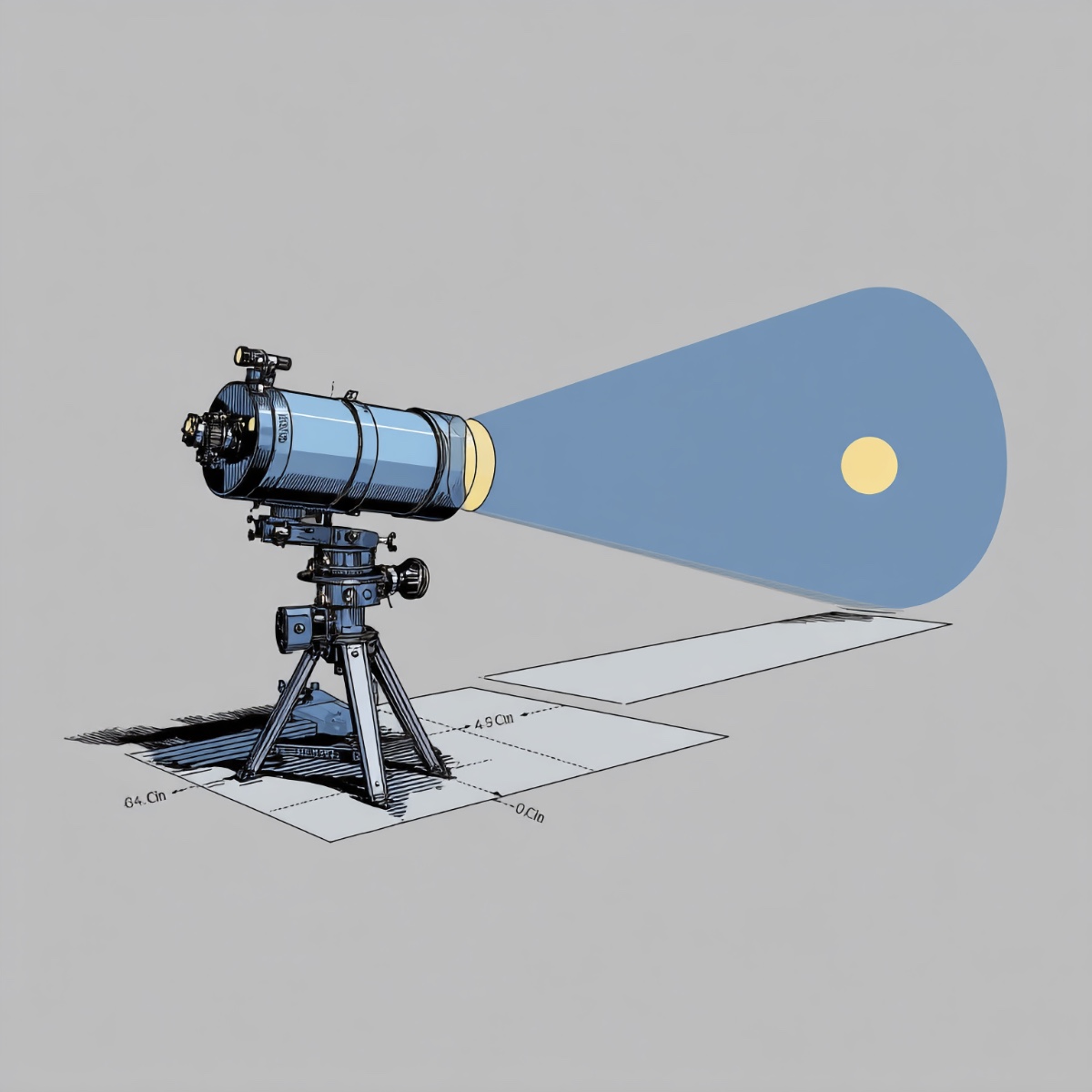Field of View Calculator
Calculate the field of view for any telescope or camera setup. This essential tool helps astronomers and astrophotographers plan observations, frame targets, and design imaging sessions.
How to Use the Field of View Calculator
- Enter your telescope or lens focal length.
- Enter your sensor dimensions or select a common preset.
- Choose the desired result format.
- See both horizontal and vertical FOV calculations.
Common Setup Examples
| Setup | Focal Length | Sensor | Horizontal FOV | Vertical FOV |
|---|---|---|---|---|
| Wide Field (50mm lens) | 50mm | Full Frame | 39.6° | 27.0° |
| Standard Telephoto (200mm) | 200mm | Full Frame | 10.3° | 6.9° |
| Small Refractor (480mm) | 480mm | APS-C | 2.8° | 1.9° |
| Schmidt-Cassegrain (2000mm) | 2000mm | Full Frame | 1.0° | 0.7° |
| Long Focal Length (3000mm) | 3000mm | ASI2600 | 27' | 18' |
Field of View Applications
Astrophotography Planning
- Target Framing: Determine if your target will fit in the frame
- Composition: Plan how objects will appear in your images
- Mosaic Planning: Calculate how many panels needed for large objects
- Focal Length Selection: Choose optimal focal length for your targets
Visual Observation
- Eyepiece Selection: Choose eyepieces for different viewing experiences
- Finder Scope Setup: Ensure finder scope FOV covers enough sky
- Star Hopping: Plan navigation routes between objects
Understanding the Formula
Field of view is calculated using: FOV = 2 × arctan(sensor_size / (2 × focal_length))
This formula accounts for the relationship between sensor size, focal length, and the resulting angular coverage in the sky.
Key Relationships:
- Doubling focal length halves the field of view
- Larger sensors provide wider fields of view at the same focal length
- Crop factor effectively increases focal length and reduces FOV

FAQ
-
What is field of view in astronomy?
Field of view (FOV) is the extent of sky visible through a telescope or camera at a given focal length. It determines what area of sky will fit in your image or view.
-
How does focal length affect field of view?
Longer focal lengths provide smaller, more magnified fields of view, while shorter focal lengths give wider views with less magnification.
-
What sensor sizes are common in astrophotography?
Common sensor sizes include Full Frame (36×24mm), APS-C (23.6×15.6mm), and Micro Four Thirds (17.3×13mm). Dedicated astronomy cameras often use 1" or smaller sensors.
-
How do I use FOV for planning observations?
FOV helps determine if your target object will fit in your camera frame and allows you to plan compositions and mosaics for large objects.